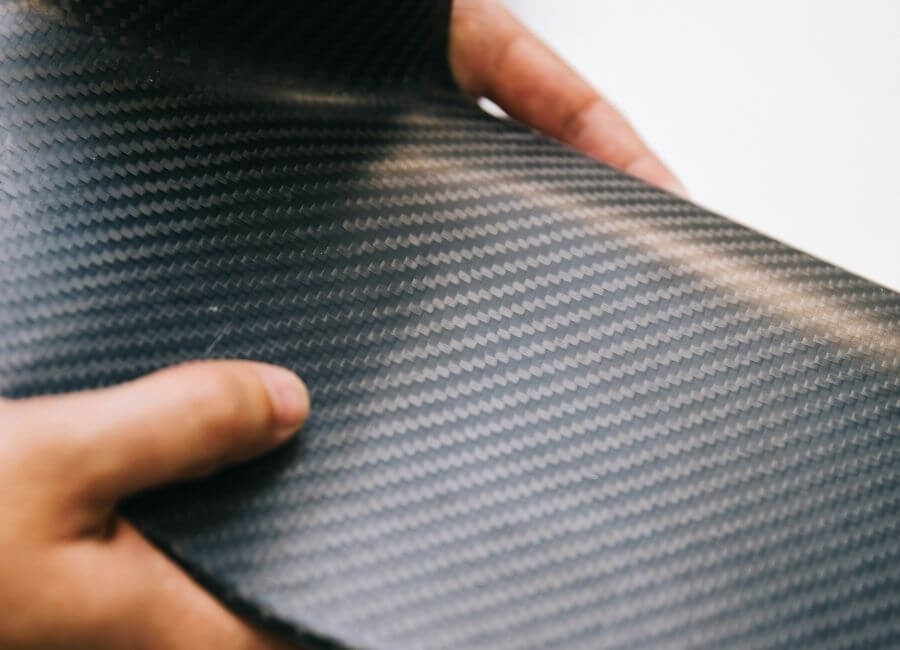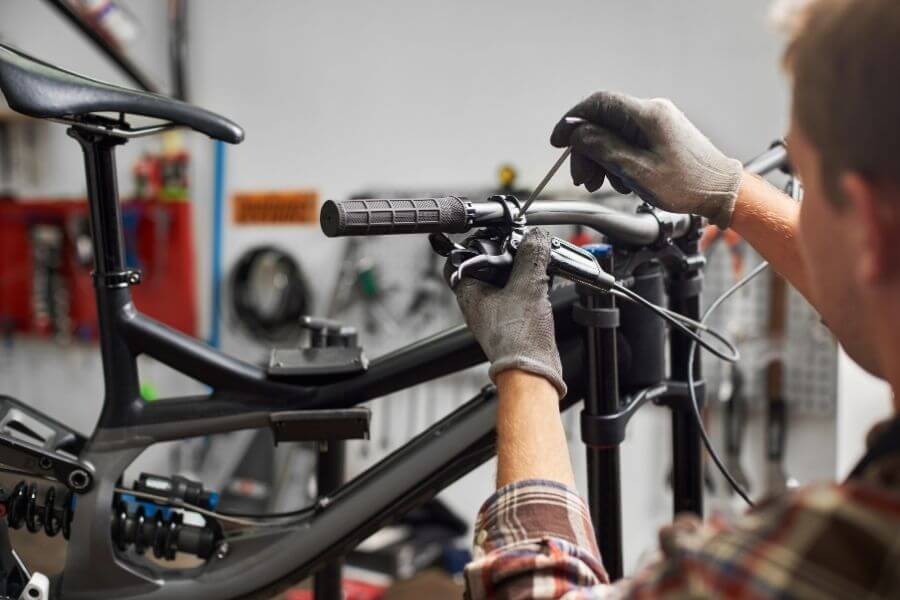Carbon bicycles have become the majority standard in medium-high ranges and are usually the great aspiration of every cyclist who wants to improve their bike. The fame of carbon as material for the construction of paintings is such that in the road cycling segment it has completely displaced aluminum. In Tuvalum, for example,
9 out of 10 road bicycles that were sold in 2021 had the carbon box. And in the mountain, although the gap between carbon and aluminum is narrower, the first is also imposed on sales from certain ranges.
But does this mean that it is the only accurate purchase option? Have you stopped buying an aluminum road bike? Do you really need to buy a carbon fiber bike? If you have raised these doubts, we help you solve them. We analyze the pros and cons of this
MATERIAL IN THE MANUFACTURE OF PICTURES and its real utility, depending on the type of cycling you practice.
A little history, when did carbon bikes emerge?
Carbon fiber began to be used in the manufacture of bicycles at the end of the 1980s as an experimental material for prototypes of road paintings and counterreloj. Look was the main driver of this material for the manufacture of paintings.
This French brand took advantage of the great investment of the famous businessman Bernard Tapie, who bought the brand, to innovate in the development of new technologies for the bicycle. Thus the first carbon bicycle in history was born in 1986, the KG 86 look with which Greg Lemond won the Tour of the same year. A model that combined carbon fiber with kevlar and aluminum hurters to reduce weight and get better performance, especially uploads.
Since then several brands such as Bianchi, Lotus or Vitus joined the manufacture of bikes with carbon in the early 1990s. An evolution to which great manufacturers such as Trek, Specialized or Cannondale at the end of that decade and the beginning of the 2000 .
Are all the equal carbon paintings?
[Captation id = "Attachment_6968" Align = "Alignnone" Width = "900"]

Image: Boggy[/caption]
This evolution of the manufacturing processes brought with it different compositions of the fibers according to the brand or the model to enhance some qualities or others depending on the type of cycling practiced or the area of the table to improve. Surely you have heard of the unidirectional fibers UD, the 3K and the 12K, among others, but you do not know how to differentiate them. They refer to the different composition and braided of the fibers, enhancing some properties over others:
K fibers (3k, 6k, 12k ...)
It refers to the way in which the carbon is woven that make up the tubes of the picture and components such as connecting rods, handlebars, etc. The K fibers are the cause of the commercial boom of carbon bicycles, thanks to its cross braided that offers greater rigidity and consistency. As for the number, it refers to the thickness of that braided. 3K have 3,000 filaments per fiber; the 6k 6,000 filaments per fiber; the 12k 12,000 filaments per fiber, and so on. The more filaments the carbon has, the more resistant and light the material is, since less epoxy resin ends up for its union.
When assessing a carbon bike, it is important to look at the type of fibers of the picture (3K, 12K, unidirectional, etc.
UD fibers
In the last seasons, the carbon of unidirectional fibers has become the most efficient carbon for the manufacture of paintings, especially in the middle and high range. The unidirectional fibers -Ded UD fibers- differ from those of type K in which they are all braided in one direction instead of being crossed. This makes the painting less resin and fibers act as a more solid and light block.
Advantages of carbon bicycles
[Captation id = "Attachment_6542" Align = "Alignnone" Width = "900"]

(Image: Pablo Guerrero - UNSPLASH)[/caption]
The benefit of lightness/rigidity is the main and most commented than you have surely heard about carbon. But this material has other very interesting advantages. We review the main ones:
1. The weight: lighter than aluminum
If you want a light bicycle that does not ballast you when rolling, climbing, etc., you have to look inevitably carbon options. Another option if your budget is more limited is to improve the assembly by introducing some carbon components: handlebars, typing, connecting rods, wheels, etc. Average weight savings with respect to an aluminum picture is remarkable, around 1 kg, although it may be greater depending on the model or brand. This does not necessarily mean that all carbon bicycles are lighter than their aluminum equivalents, since the joint weight of a bicycle not only depends on the picture, but other elements such as wheels, change group, wheels, etc.
2. The resistance
The composition of the carbon filaments is in itself very resistant to impact and heat. And if we unite his braided and union we have very solid tubes that are also very resistant to impacts, heat or corrosion. The following video shows a resistance test of tubes of different materials (steel, aluminum, kevlar ...) where you can see the resistance of the carbon fiber TE type composite (generalized in the manufacture of paintings) compared to the rest of metals.
https://youtu.be/mnDL6E9NoF8
3. Elasticity and absorption capacity
Its composition through united wires with resin (usually epoxy) offers a flexible and absorbent structure. In addition, many manufacturers such as Cannondale or Trek play with the thickness of the fibers in certain areas of the painting (pods, braces, direction) to absorb more or less impacts from the ground. Carbon, in general, is a material with which you can vary the geometries and shapes of the tubes of the painting to adapt to specific cyclist needs. This confers a greater capacity to absorb the irregularities of the asphalt and the land and offer greater comfort to the cyclist.
4. higher level of integration
This customization capacity of the picture we were talking about in the previous point allows you to manufacture pictures with more stylized and smaller tubes than aluminum, in addition to playing with different profiles, shapes or sections. The unions of the tubes are barely noticed and the components can be better integrated and achieve greater aerodynamic performance.
Disadvantages of carbon
[Captation id = "Attachment_6532" Align = "Alignnone" Width = "900"]

Image: Frans Ruiter - Unspash)[/caption]
Not everything is advantages. Although carbon is a material that offers very high benefits in terms of lightness, rigidity and comfort, it also presents a series of inconveniences that should not be taken into account when deciding on a carbon or aluminum bicycle. These are the main disadvantages:
1. The price: they are more expensive bicycles
The cost of the raw material of carbon fiber is greater than that of aluminum. It costs more to generate and process it. In addition, the molding and manufacture of pictures or components is much more expensive than materials such as aluminum and steel. All this has an impact on the price. Currently, carbon is still reserved for mid -range and high bicycles, with starting prices of new models of 1,700 euros onwards for mountain or road. If your budget is lower an interesting option is to buy a
second -hand carbon bike. To compensate for the high carbon price, some brands turn to integrate low -ranges components with their bicycle input models with carbon box.
2. More expensive repairs
Carbon table breaks are not given as often as believed. It ends up being a material both or more resistant than aluminum. However, in case of breakage the fragility is greater and its repair in more complex and face workshop. It is a point to value, although with some
basic and frequent care You can reduce the possibilities of breakage.
3. Greater sensitivity in friction and tightening pairs
One of the usual maś fissures in the carbon paintings is produced by excessive tightening of the closure of the beast in the box. Although carbon is a very rigid and resistant material, this hardness forces us to be more care when assembling other components. That is why it is essential to have special assembly paste or fat for carbon to assemble a shell or handlebar. Also, when screwing it is very important that you respect the tightening torque (expressed in NM) facilitated by the manufacturer. If you squeeze a lot, the possibility of fissure or breakage can be greater than in an aluminum box.
4. Non -recyclable material
Another disadvantage that is not trivial is the carbon footprint that generates carbon. The manufacture of a bicycle picture of this material has a greater energy expenditure and generates more waste than aluminum or steel. In addition, unlike these last materials, carbon is very difficult to recycle. Once degraded you can only recycle part of the epoxy resin of its composition, the rest is highly polluting and usually ends up rotting in landfills or even in rivers and seas.
Myths and legends on carbon paintings
[Captation Id = "Attachment_5973" Align = "Alignnone" Width = "900"]

Image: Depositphotos[/caption]
Carbon fiber as star material for bicycle manufacturing is surrounded by a multitude of myths and legends that it is convenient to deny. When looking at purchase options, do not be influenced by this type of clichés and look for truthful and contrasted data in consolidated brands, specialized media, engineering studies, etc.
Myth 1: Carbon is more fragile than aluminum
This statement is a half truth that should be clarified. The different impact resistance tests give carbon fiber composite a solidity greater than those of steel or aluminum alloy. Also, its resistance to corrosion and temperature changes is also higher. In general, more is isolated from outside. This means that the degradation or risk of breakage due to quality carbon is less with respect to an equivalent in aluminum or steel. However, precisely due to its greater rigidity and solidity, given a direct impact of great power, carbon is not deforms but tends to crack. Hence the assumption that it is more fragile than aluminum.
Myth 2: It only has benefits in competition
This is a myth that is increasingly banished, fortunately. Although there are still many cyclists who believe there are no substantial differences for amateur use of the bicycle. As we have already explained, carbon not only gives greater lightness and better levels of rigidity, which are used in rhythm changes or to generate more watts. It also provides comfort and absorption when overcoming obstacles and rolling through irregular terrain. This myth is easy to banish: Test to roll 100 kilometers with an aluminum bicycle and compare it with the same journey on a carbon bicycle. A component and assembly equality The carbon bicycle offers greater comfort on long routes.
Myth 3: Carbon needs more care
Carbon may present greater sensitivity when assembling components. But beyond using specific assembly fat and not passing with tightening torque, it requires practically the same care as other materials such as aluminum or steel. Even less, since it is not prone to oxidation or corrosion.
Conclusions
Once the characteristics of carbon are seen, it is answered to the question with which we open this article. Undoubtedly a carbon bike ends up having many more pros than cons that an aluminum bike. We can advise you to buy a carbon bicycle if you really take the practice of cycling and want to win in performance and comfort.
The investment, which is increasingly acceptable due to its generalization in cheaper ranges, ends up worth it in all aspects and for all modalities. Even the most radicals in mountain biciclism such as enduro or descent. However, we do not recommend this type of bicycles if you are going to bike occasionally or to make short, little demanding and without great sports goals, where there is less need to go fast. Nor for uses other than strictly sports, such as urban displacements from house to work. For everything else, we tell you yes to carbon.
 Image: Boggy[/caption]
This evolution of the manufacturing processes brought with it different compositions of the fibers according to the brand or the model to enhance some qualities or others depending on the type of cycling practiced or the area of the table to improve. Surely you have heard of the unidirectional fibers UD, the 3K and the 12K, among others, but you do not know how to differentiate them. They refer to the different composition and braided of the fibers, enhancing some properties over others:
Image: Boggy[/caption]
This evolution of the manufacturing processes brought with it different compositions of the fibers according to the brand or the model to enhance some qualities or others depending on the type of cycling practiced or the area of the table to improve. Surely you have heard of the unidirectional fibers UD, the 3K and the 12K, among others, but you do not know how to differentiate them. They refer to the different composition and braided of the fibers, enhancing some properties over others:
 (Image: Pablo Guerrero - UNSPLASH)[/caption]
The benefit of lightness/rigidity is the main and most commented than you have surely heard about carbon. But this material has other very interesting advantages. We review the main ones:
(Image: Pablo Guerrero - UNSPLASH)[/caption]
The benefit of lightness/rigidity is the main and most commented than you have surely heard about carbon. But this material has other very interesting advantages. We review the main ones:
 Image: Frans Ruiter - Unspash)[/caption]
Not everything is advantages. Although carbon is a material that offers very high benefits in terms of lightness, rigidity and comfort, it also presents a series of inconveniences that should not be taken into account when deciding on a carbon or aluminum bicycle. These are the main disadvantages:
Image: Frans Ruiter - Unspash)[/caption]
Not everything is advantages. Although carbon is a material that offers very high benefits in terms of lightness, rigidity and comfort, it also presents a series of inconveniences that should not be taken into account when deciding on a carbon or aluminum bicycle. These are the main disadvantages:
 Image: Depositphotos[/caption]
Carbon fiber as star material for bicycle manufacturing is surrounded by a multitude of myths and legends that it is convenient to deny. When looking at purchase options, do not be influenced by this type of clichés and look for truthful and contrasted data in consolidated brands, specialized media, engineering studies, etc.
Image: Depositphotos[/caption]
Carbon fiber as star material for bicycle manufacturing is surrounded by a multitude of myths and legends that it is convenient to deny. When looking at purchase options, do not be influenced by this type of clichés and look for truthful and contrasted data in consolidated brands, specialized media, engineering studies, etc.












